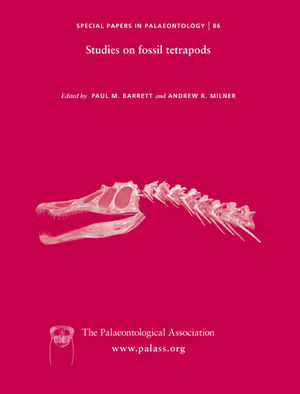Reg. Charity No. 1168330

A beautifully preserved skull from the Barremian Wessex Formation of the Isle of Wight, England, represents the first known skull of a European solemydid turtle and is referred to the taxon Helochelydra nopcsai. The cranium is characterized by a number of unique traits, including a greatly reduced dorsal exposure of the prefrontal; pterygoids that completely cover the basisphenoid ventrally; a complete lack of a processus interfenestralis; and fully confluent inner and middle ear cavities. A phylogenetic analysis places Helochelydra nopcsai close to Mongolochelys efremovi, Meiolania platyceps and Kallokibotion bajazidi just outside crown Testudines, but the interrelationships of these four taxa cannot be resolved with confidence. Given that the vast majority of solemydid turtles are known from fragmentary shell material only, we herein develop a series of typological taxon definitions that utilize shell sculpturing and retrieve consistent classes of fragments that originate from specific geological formations. ‘Helochelydra’ bakewelli and ‘Helochelydra’ anglica are removed from Solemydidae and tentatively affiliated with the pleurosternid taxon Compsemys. The holotype of the North American Naomichelys speciosa is shown to originate from the Lower Cretaceous (Aptian) Kootenai Formation and the fossil record of this taxon is summarized for the first time. Solemydids are known from the Berriasian– Maastrichtian of Europe and from the Aptian–Campanian of North America. The palaeoecology of solemydid turtles remains ambiguous as the presence of limb osteoderms suggests terrestrial habitat preferences whereas the flattened palate is more typical of an aquatic molluscivore.